In the digital age, silicone keypad buttons have become the top choice for users as they offer comfortable, durable, and high-performance operation. This article delves into manufacturing silicone keypad buttons, detailing key steps and technologies. It explains everything you need to know, from materials, design, production, surface decoration, and application. By the end, you will better understand this crucial process and be able to make informed decisions.
Silicone keypad buttons are keypads made from silicone material commonly found on television remote controls, air conditioner remotes, and instrument panel keypads. These buttons are characterized by soft elasticity, temperature resistance, and waterproof and dustproof performance. They provide a comfortable tactile experience, long-lasting durability, and adaptability to various environmental conditions.
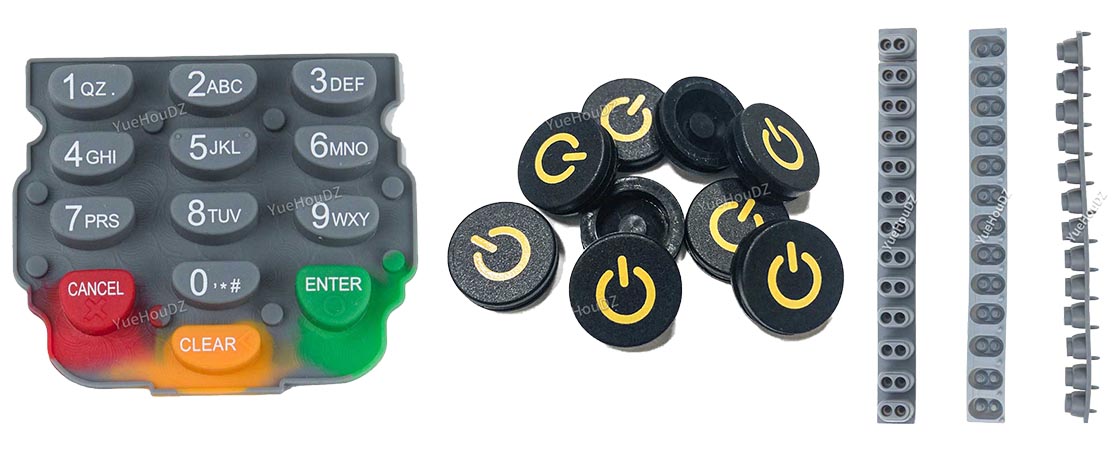
High-transparency silicone is a type of silicone material characterized by its excellent transparency and light transmission properties. Compared to regular silicone, high-transparency silicone exhibits lower transmission losses and higher levels of transparency within the visible light spectrum. Make a silicone keypad with better-backlit characters.
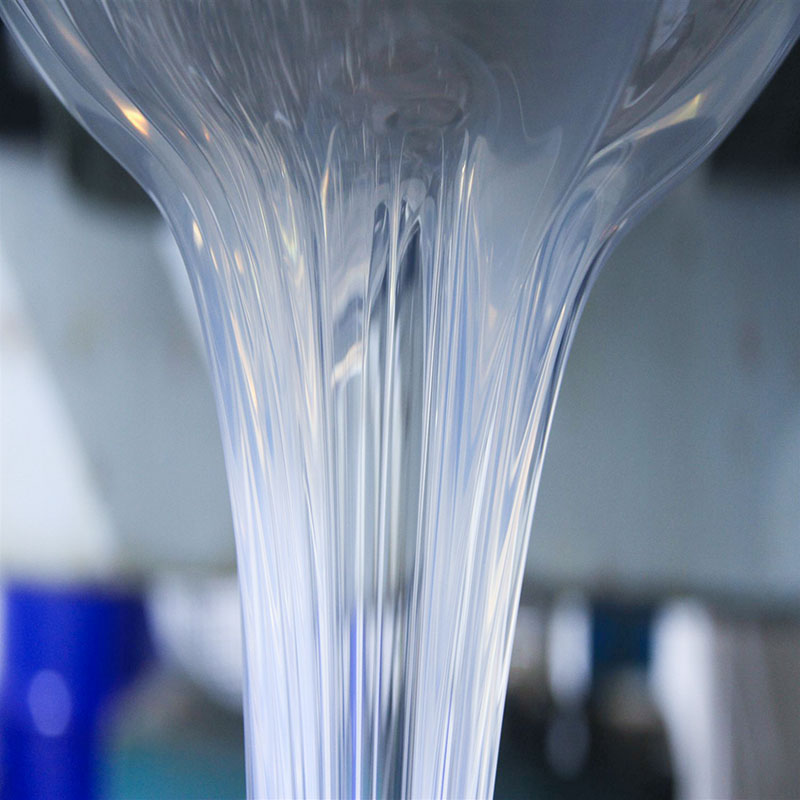
The hardness range of silicone varies from 10 Shore A to 80 Shore A, where silicone with a Shore A hardness of 10 is the softest, while silicone with a Shore A hardness of 80 is relatively more rigid. As the hardness of silicone keypad buttons increases, the tactile feel improves, but if the hardness is too high, it can affect the product's lifespan. On the other hand, lower hardness results in softer keypads with a poorer tactile feel and increased friction between the keypad buttons and plastic housing, leading to potential keypad button sticking issues. Therefore, a 50° or 60° hardness is commonly recommended for silicone buttons.
Silicone rubber typically has a high-temperature resistance range of -50 °C to 200°C. This type of silicone can maintain its soft elasticity at lower temperatures and withstand long-term use under high-temperature conditions. Choosing silicone with high-temperature and low-temperature resistance properties is vital to prevent deformation in high-temperature environments and avoid hardening, becoming brittle, or losing elasticity in low-temperature environments.
The design and manufacturing of molds are crucial in the manufacturing industry. It involves the process of transforming product design into actual components or products. Excellent mold design can enhance production efficiency and product quality. This article will explore the importance and vital elements of mold design and manufacturing for silicone keypad buttons.
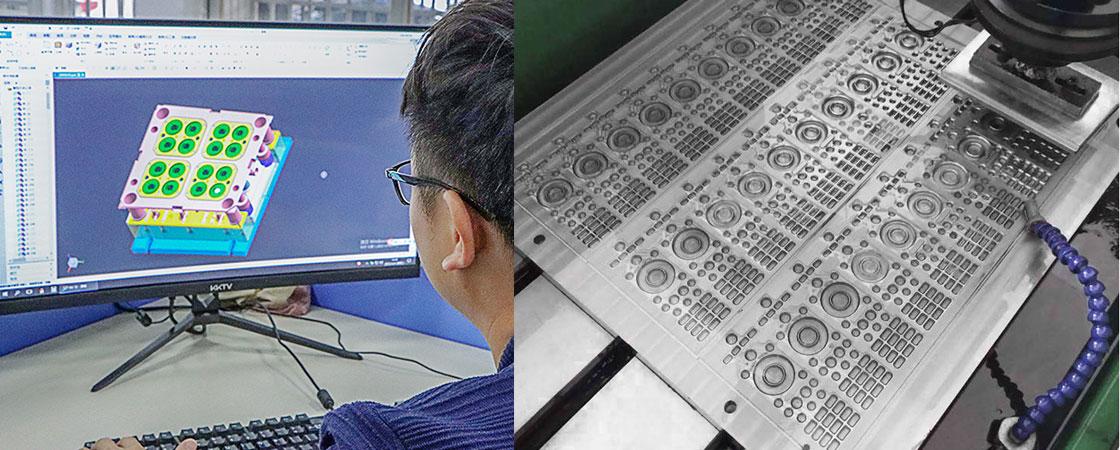
Actuation Force: The amount of force required to press a button. silicone keypad Buttons should have a moderate actuation force during use, ensuring they are not too light to cause accidental presses or too heavy to impact usability and comfort. Actuation force can be controlled by adjusting the hardness of the silicone material, as well as the shape and structure of the button.
Travel: Refers to the distance or displacement from the original state to the fully pressed position of a silicone keypad button. The length of travel is typically determined based on user requirements and application scenarios. Extended travel can provide more noticeable tactile feedback, while shorter travel is more suitable for applications that require quick response.
Position: Refers to the layout and placement of silicone keypad buttons. The positioning of silicone keypad buttons should adhere to ergonomics principles, making it easy for users to locate and operate them accurately. Proper silicone keypad button placement can provide a convenient user experience and help prevent accidental activations.
Displacement: Refers to the distance or amount of movement that a silicone keypad button undergoes from its original position after being pressed. Displacement provides clear tactile feedback to users, enabling them to perceive if the silicone keypad button has been triggered. The magnitude of displacement can be adjusted based on user requirements and application scenarios.
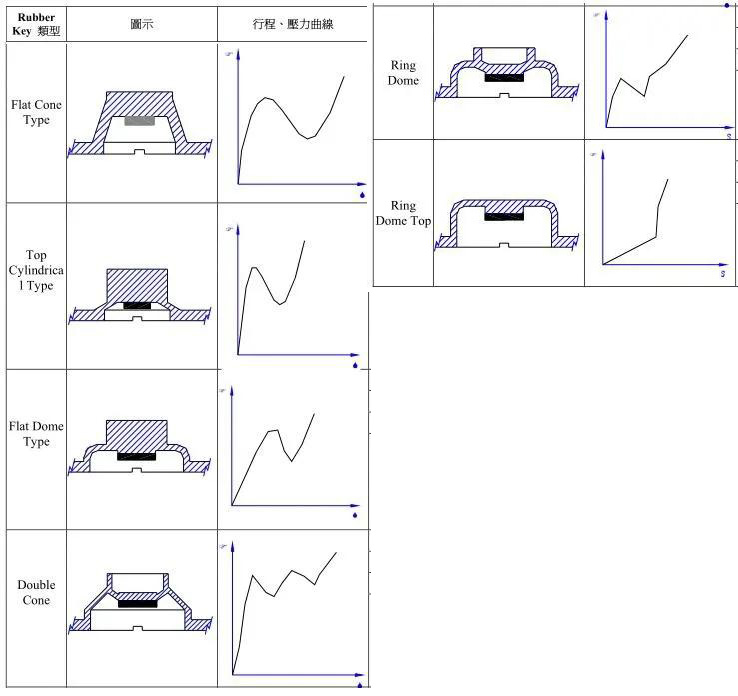
The software commonly used for silicone keypad button mold design includes UG, Pro/E, CAD, and Rhino. After designing the 3D drawings, they can be saved in STP format and sent to the factory for structural evaluation and quotation. If you have little experience in silicone keypad button design, you can rely on YueHouDZ engineers to provide design services.
These software applications are widely used in silicone keypad button mold design. Depending on the user's needs and preferences, choosing the software that suits their requirements for silicone keypad button mold design is recommended.
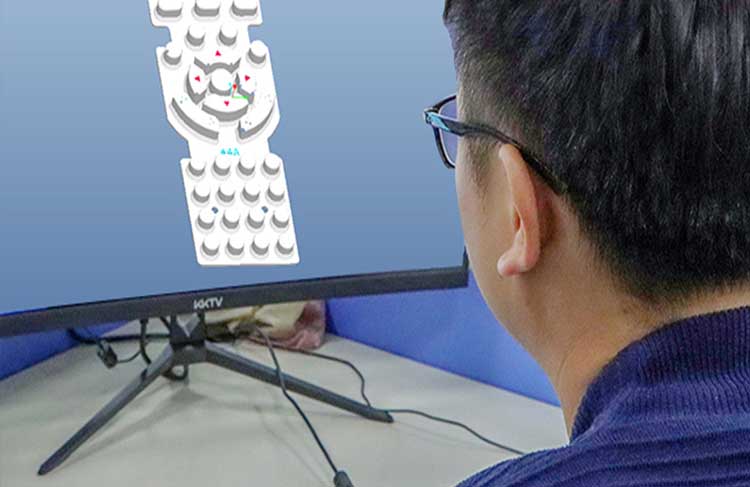
The manufacturing of silicone keypad molds is a complex and precise process, typically involving the following steps:

Developing mold manufacturing plan: Developing a mold manufacturing plan based on design requirements and production needs. Determining key parameters such as the type of mold, materials, dimensions, and manufacturing processes.
Material preparation: Select appropriate mold materials, such as P20, 718, and S136, and ensure the quality and reliability of the materials—processing and optimizing the materials through cutting, forging, heat treatment, and surface treatment processes.
CNC machining: Utilizing CNC machine tools for precise mechanical processing, including milling, turning, drilling, and boring operations. Process and shape various mold parts according to design drawings and process requirements to manufacture the mold components.
Precision grinding: Using grinding equipment with wheels for delicate grinding parts to achieve the required dimensions, shapes, and smoothness. The grinding process requires high precision and patience to obtain high-quality mold components.
Assembly and debugging: Assemble the various mold components, ensuring that the fit and clearances of each part meet the requirements. Conduct system testing and debugging of the mold to ensure its proper operation and compliance with product quality requirements.
Surface treatment: Perform surface treatment on the mold as required, such as coating, polishing, plating, etc., to enhance the mold's wear resistance, corrosion resistance, and aesthetic quality.
Quality inspection: Conduct rigorous quality inspections on the manufactured molds, including dimension measurements, material testing, functional testing, etc., to ensure that the quality and performance of the molds meet the design requirements and customer needs.
Delivery and after-sales support: Deliver the completed silicone keypad molds to the customer and provide necessary after-sales support, including mold usage guidance, maintenance advice, etc.
Material preparation and compression molding are critical components in mold manufacturing. Material preparation involves selecting and blending suitable raw materials, while compression molding involves solidifying and shaping the material through heating and applying pressure. This article will explore the importance of silicone material preparation and compression molding and their applications in mold manufacturing.
In addition to their superior performance characteristics, silicone products have a unique feature - they can change color. This makes silicone products more diverse and competitive. So, how are silicone products colored? Let YueHouDZ provide you with the answer.
Silicone coloring paste is formed by aggregating silicone raw materials, silicone oil, color pigments, and dispersants. It adds color to silicone, giving it the desired color effect. The reason for choosing to use Silicone Coloring Paste to create colors for silicone products is that it is stable in performance, has high dispersibility, is environmentally friendly, non-toxic, non-polluting, does not expire after long-term storage, and many of its characteristics are similar to silicone raw materials. There are many types of coloring paste, mainly organic coloring paste, and inorganic coloring paste.
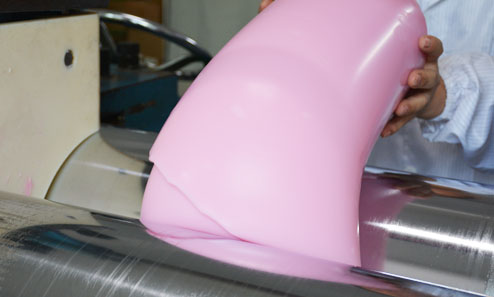
The molding of silicone silicone keypad is carried out through the compression molding method. Here are the detailed steps regarding the molding process of silicone keypad:

Mold preparation: First, make a mold suitable for silicone buttons. The mold generally consists of two parts, namely, the male mold and the female mold. The male mold has a button shape, and the female mold corresponds to the back of the button.
Silicone preparation: Accurately weigh the silicone and curing agent materials according to the formula ratio and mix them thoroughly. Color and other additives can also be added during this process to achieve the desired effect.
Silicone preparation: Accurately weigh the silicone and curing agent materials according to the formula ratio and mix them thoroughly. Color and other additives can also be added during this process to achieve the desired effect.
Compression molding: Cut the prepared silicone into strips or blocks, put them into the female part of the mold, and then cover the male mold on the female mold to ensure it is tightly closed. Next, the silicone is filled into every mold space by applying pressure, allowing it to fill the entire essential shape.
Curing: After silicone compression molding, the silicone in the mold needs to be cured under certain temperatures and time conditions. This method is suitable for making silicone products of various shapes and sizes.
Demoulding: After the silicone keypad is completely cured, open the mold and remove the button from the mold. Thanks to the pre-applied release agent, the silicone keypad can be released from the mold relatively smoothly.
Trimming and inspection: Perform trimming on the molded silicone keypad, such as removing flash edges, cutting off remaining material, etc. The buttons are then visually inspected, dimensionally measured, and functionally tested to ensure quality meets requirements. Coating, printing, or other treatment steps can be done if required.
The silicone keypad button molding process requires careful operation to ensure the design and manufacturing quality of the mold while strictly controlling the parameters of the silicone ingredients and molding process to obtain high-quality and consistent silicone keypad button products.
Adding conductive functions to silicone keypad buttons is a technology developed to meet the needs of specific applications. Electrical signal transmission between the silicone keypad and electronic devices can be achieved by adding conductive materials or coatings to the buttons. The following are some of the more common conductive methods.
Conductive ink has conductive properties, mainly composed of conductive particles, solvents, connecting materials, and other additives. It is applied to the substrate surface via printing technology. During drying, the solvent evaporates, creating conductive connections between the conductive particles and firmly bonding to the substrate. In this way, the conductive ink can perform its conductive function.
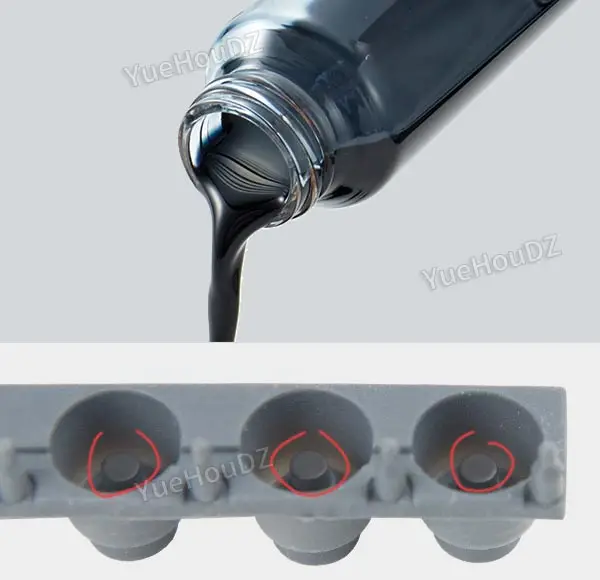
Conductive particles are tiny particles made of conductive materials, such as carbon powder or metal powders (such as silver powder, copper powder, or nickel powder). This combination allows conductive black particles to be flexibly applied to various conductive needs and provide a stable conductivity function.
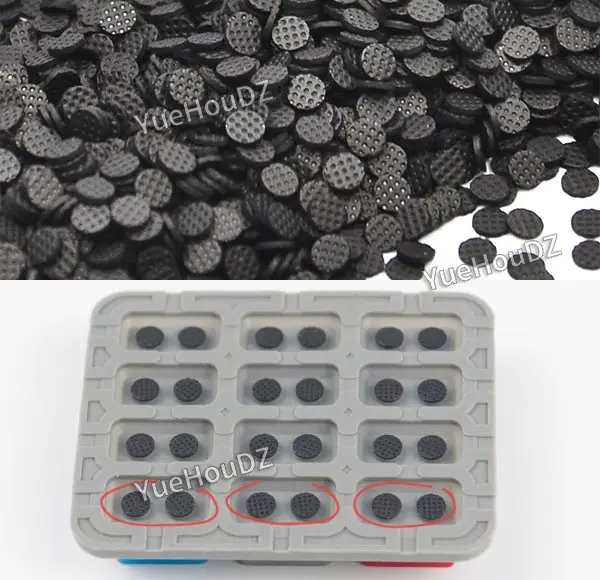
When the silicone keypad button is pressed, the metal dome, as part of the membrane switch, is flattened to contact the circuit board, thus achieving the conduction function.
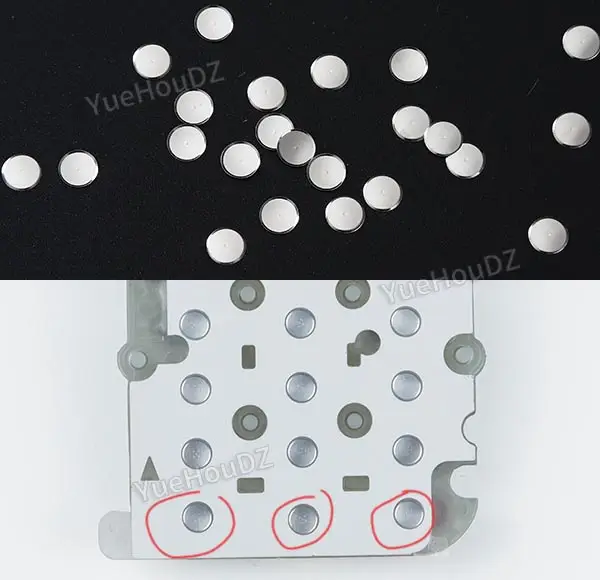
Silicone keypad button post-processing improves appearance, wear resistance, texture, durability, and functionality. Surface decoration can achieve different patterns and text on the silicone keypad.
Edge removal: There are three methods of edge removal (manual edge removal, mechanical edge removal, and frozen edge removal). The primary purpose is to remove the burrs or hole chips associated with the product when it is released from the mold and to reduce the fit gaps during the assembly of silicone rubber products. silicone keypad buttons are mainly used for sealing and waterproofing. If the edges are irregular and the cape is relatively large, the effect of the silicone products will be directly affected.
Cleaning: Clean the formed silicone keypad products to remove dust, impurities, etc., on the surface.
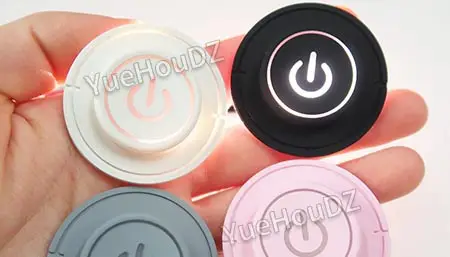
Laser Engraved Backlit Keycaps

Laser Engraved Translucent Color-Key Keycaps

Silk-screen Printing

Doming Dome Coating
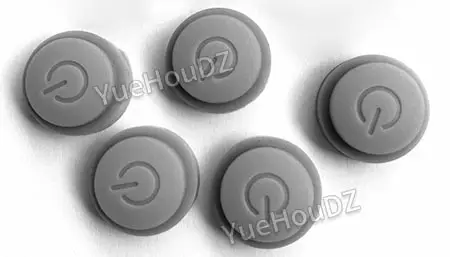
In-Mold Engraving
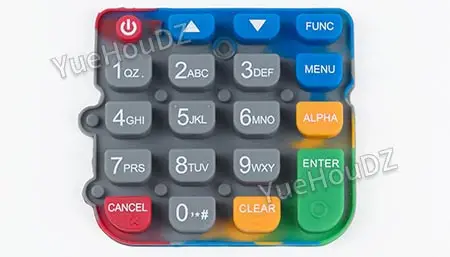
Color-Molded Keycaps

Multi-color Silk-screened Keycaps
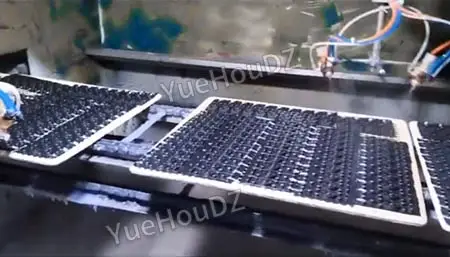
Spray Lacquer, Matte Finish, and Polyurethane Varnish
Silicone keypad button quality control is a series of measures to ensure that critical products have stable performance, reliable trigger response, and durable service life. Here are some standard silicone keypad button quality control methods:
Appearance inspection: Inspect the silicone keypad buttons' appearance, including surface flatness, scratches, bubbles, and other issues, to ensure the silicone keypad' appearance is flawless.
Size measurement: Measure the size of the silicone keypad buttons, such as length, width, thickness, etc., to ensure that the silicone keypad buttons meet the design requirements and standard sizes.
Functional testing: Use professional testing equipment or instruments to test the triggering force, rebound force, stroke, and other parameters of the silicone keypad button and check whether the triggering response of the silicone keypad button is standard.
Lifetime testing: Lifetime testing is conducted by simulating the continuous use of silicone keypad buttons using a mechanical arm or equipment to evaluate the durability and reliability of the silicone keypad buttons.
Environmental testing: silicone keypad buttons are exposed to different environmental conditions, such as high temperature, low temperature, humidity, etc., to test their performance under various conditions.
Reliability assessment: By conducting sampling inspections and statistical analysis, among other methods, the overall reliability level of button products is evaluated to determine whether they meet the requirements.
Quality Management System: Establish a comprehensive quality management system, including ISO9001 certification, to ensure the effective implementation and continuous improvement of quality control and management throughout the button manufacturing process.
Through the above silicone keypad quality control methods, companies can effectively monitor and manage the quality of silicone keypad products, providing customers with high-quality, stable, and reliable products.
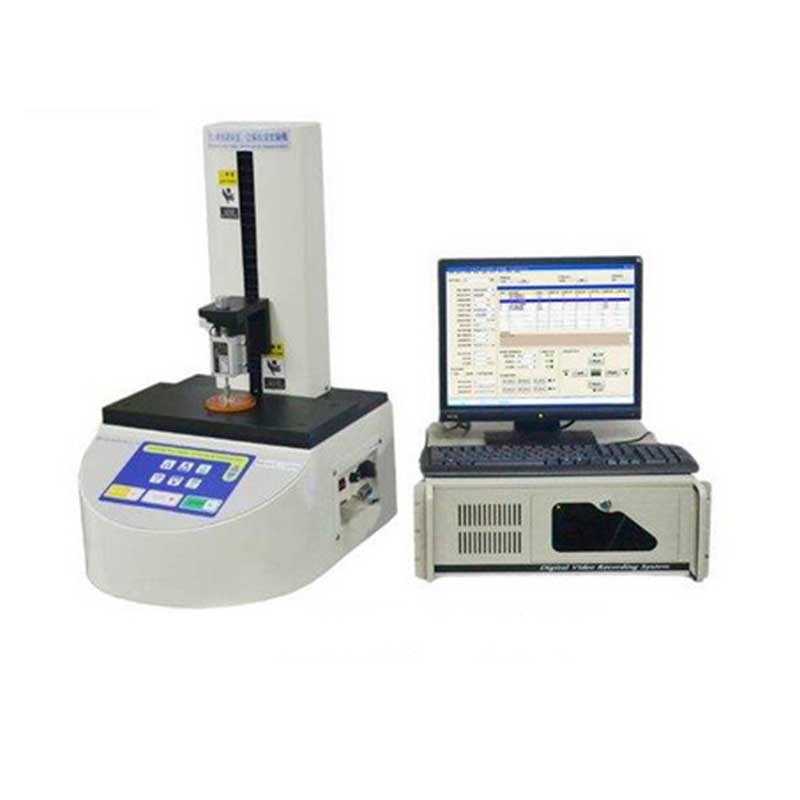
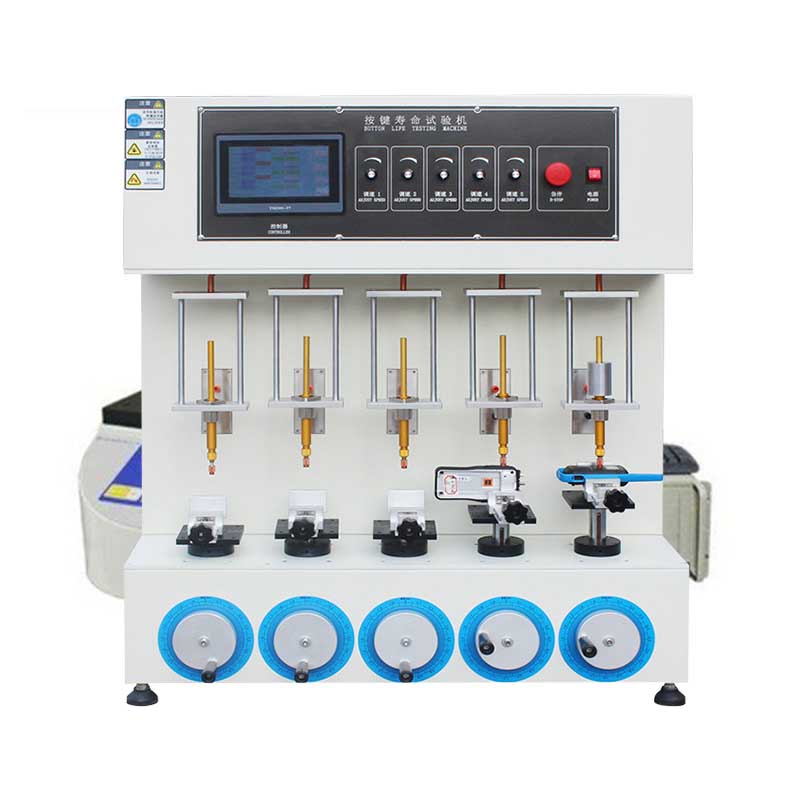
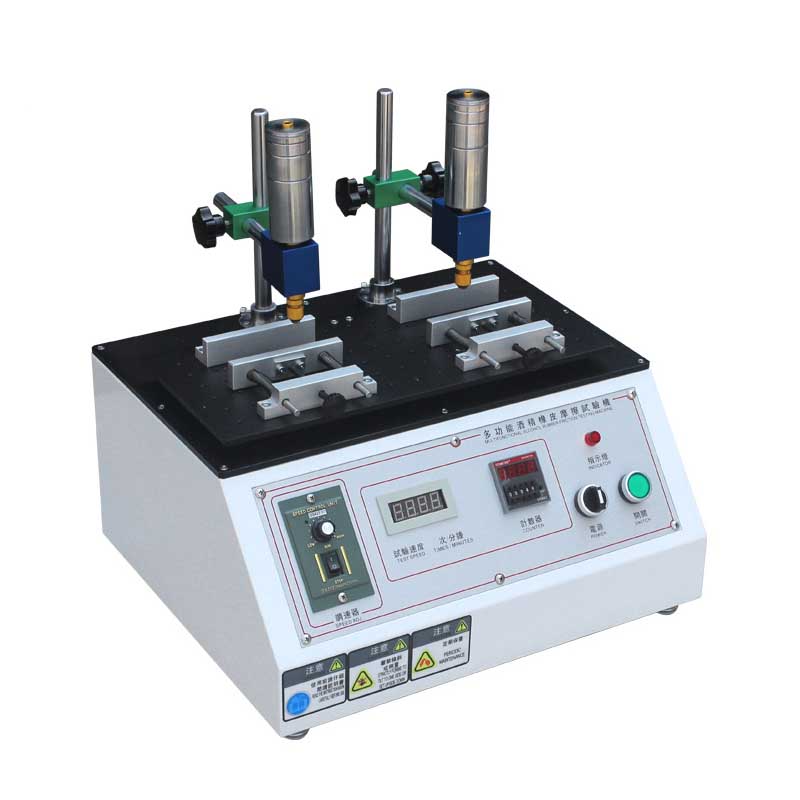
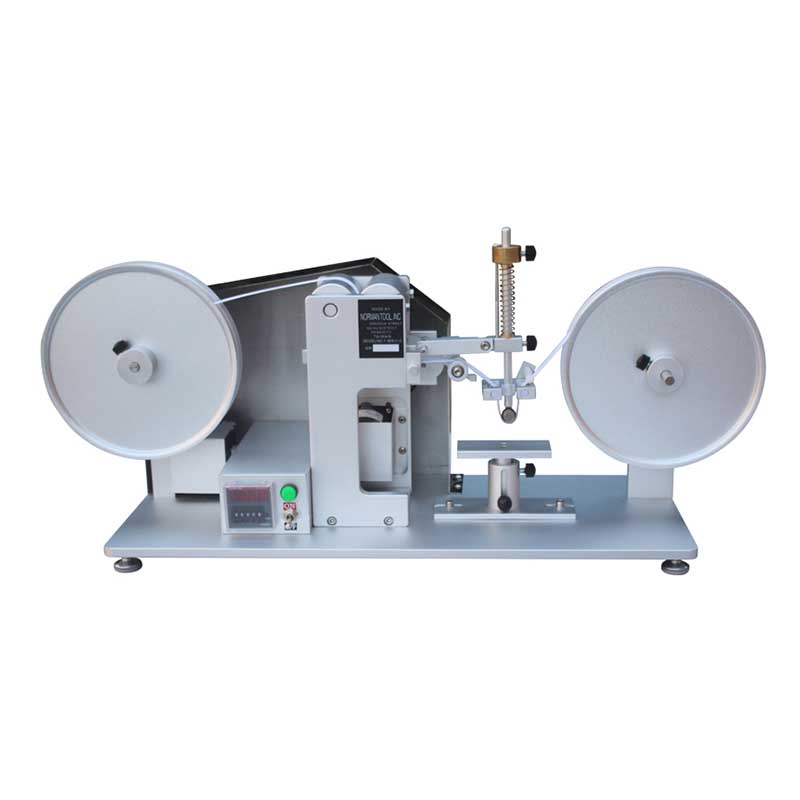
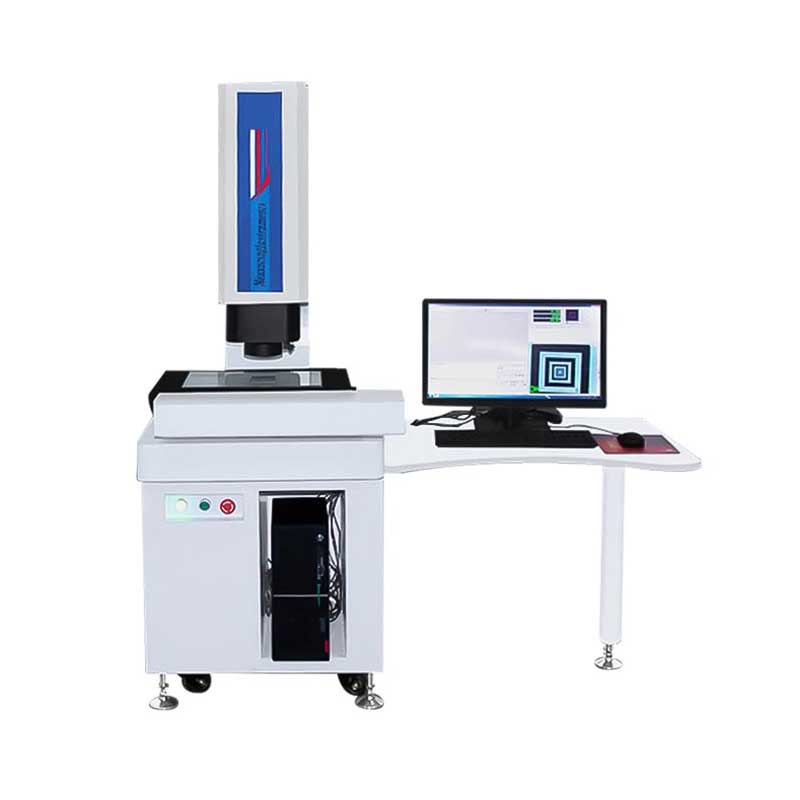
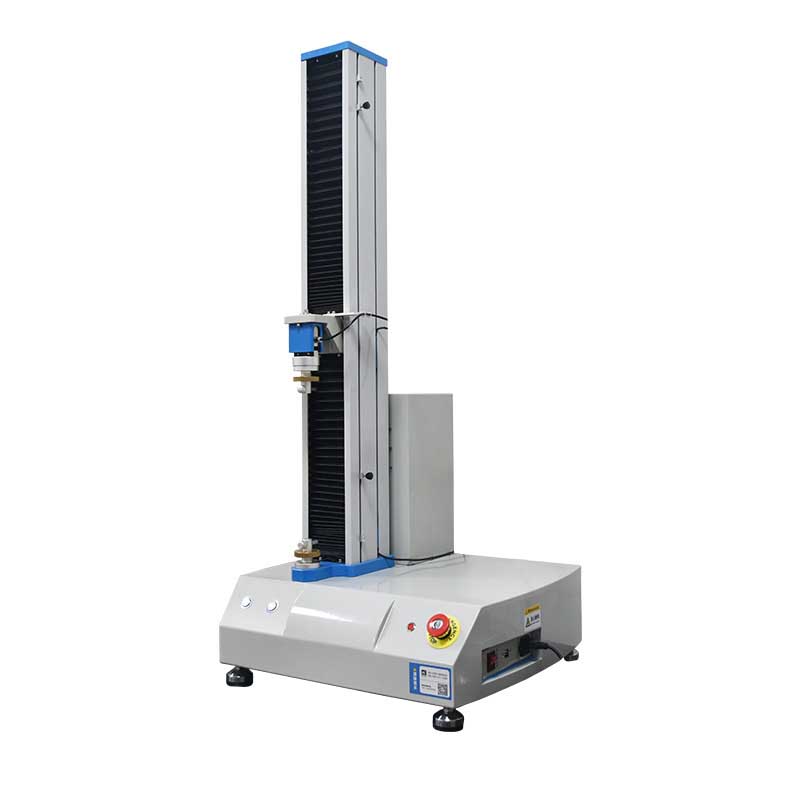
silicone keypad buttons are widely used, and common ones include but are not limited to the following fields:
Electronic products: silicone keypad buttons are widely used in various household appliances such as remote controls, phones, computer keyboards, etc., to provide users with operation and input control functions.
Automotive industry: Functions such as dashboards, audio systems, and air conditioning controls inside the car all require silicone keypad buttons to operate, as well as function buttons such as door locks.
Medical equipment: Medical equipment requires silicone keypad buttons for equipment adjustment, parameter setting, and operation to ensure that medical personnel can control the equipment accurately.
Industrial control: In automation control systems, silicone keypad buttons control functions such as equipment start and stop, speed adjustment, and program selection.
Military industry: In military equipment, communication equipment, and navigation systems, silicone keypad buttons also play an essential role in controlling and operating equipment.
Consumer electronic products: silicone keypad buttons are also widely used in consumer electronic products such as smartphones, tablets, and game controllers to provide user interaction functions.
These are only part of the application fields of silicone keypad buttons used in various industries. As a common control element, silicone keypad buttons provide convenient operation and control methods for electronic devices and systems.
As an essential operating component, silicone keypad buttons have many applications and needs in modern electronic products. They are usually divided into two types. The first is a full silicone button, and the second is built inside a plastic button. Therefore, its market prospects are considerable. The following are some views on the prospects of the silicone keypad button market:
Innovative applications: With the continuous development of technology and the continuous upgrading of electronic products, the demand for silicone keypad buttons is also growing. The flexibility and plasticity of silicone keypad buttons enable it to be used in more innovative products, such as smart homes, intelligent wearable devices, etc.
Durability and stability: silicone keypad buttons have good wear resistance, high-temperature resistance, and chemical resistance, allowing them to maintain stable performance in harsh environments, so they are favored in industrial fields and special environment applications.
Personalized customization: Silicone keypad buttons can be customized in different colors, shapes, patterns, etc., to meet the individual needs of customers. They adapt to the design requirements of various industries and applications and have strong market competitiveness.
Substitute traditional materials: Compared with conventional metal or plastic buttons, silicone keypad buttons have a softer, more comfortable feel and lower production costs. Therefore, they are expected to replace traditional materials in some areas and promote market growth.
Intelligent demand: With the continuous popularization of intelligent products, silicone keypad buttons play a vital control role in some smart devices, instruments, equipment, 3C digital products, smart home appliances, etc. This will further promote the demand growth in the silicone keypad button market.
In general, the silicone keypad button market has broad prospects. With the continuous advancement of technology and the continuous expansion of application fields, silicone keypad buttons will continue to play an essential role in the future and have huge market potential.
YueHouDZ is a silicone product manufacturer headquartered in China that provides quality-focused silicone compression molding services. It can give silicone product design, mold manufacturing, and silicone product mass production services.
We have strong silicone compression molding capabilities and an engineering team with extensive experience in silicone compression molding. In addition to manufacturing, we follow strict quality inspection to ensure quality better.
If you have creative ideas, we can provide free design services and help you quickly realize product production.
After comprehensive analysis and explanation, this article deeply explores the complete process flow of making silicone keypad buttons. We can ensure the production of high-quality silicone keypad buttons through careful selection of raw materials, mold design, material preparation, compression molding and post-processing, quality control, and testing. These silicone keypad buttons are widely used in various fields and have promising market prospects.
In short, the process of making silicone keypad buttons is critical. Comprehensively mastering the key steps and points will help produce more reliable and durable products to meet the needs of different fields.